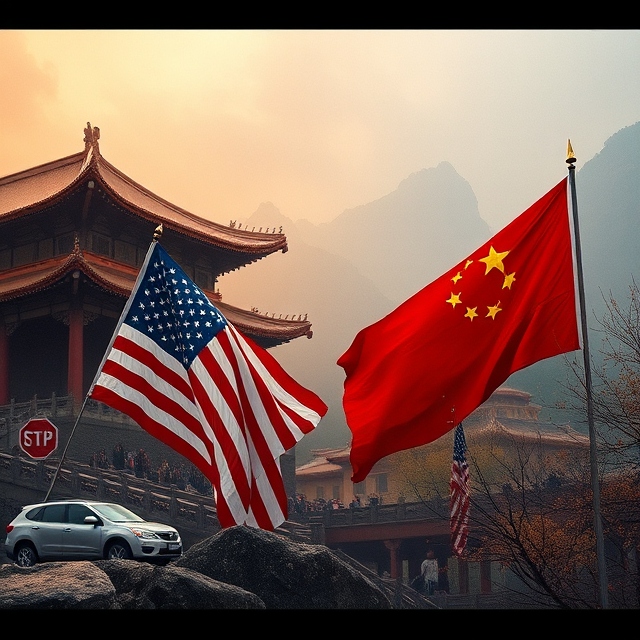How American-Chinese Competition May Reshape the World Order
In the U.S. capital, discussions about the potential decline of American geopolitical dominance on the international stage are among the few topics that unite people across the political spectrum. Government representatives, intellectuals, media figures, lobbyists, and elites all seem to agree on one thing: the rise of China. However, there is little consensus on the appropriate course of action the U.S. should take to counter this perceived challenge to its global hegemony.
The prevailing belief among elites is that China’s economic growth and expanding trade relations will continue to accelerate in the coming years and decades, which will likely amplify its geopolitical influence, particularly in the South China Sea and the Pacific Ocean. Moreover, China’s active political mediation efforts in the Middle East and Africa are already a cause for concern. Based on these trends, Washington firmly believes that China poses the most significant challenge to U.S. global dominance today.
However, those in power in Washington do not foresee China genuinely competing with the U.S. in military and technological domains, partly because growth in these sectors is largely homegrown, and U.S. weaponry and tech products remain more affordable. As a result, Washington does not perceive the Chinese threat as requiring a full-scale global response. Some argue that leveraging America’s superior military and technological capabilities should be sufficient to curb China’s ambitions, both in business competition and in forming new alliances.
Many claim that discussions about China in U.S. power circles often center on the superiority of the American Air Force over its Chinese counterpart, whose engines were imported from Russia and, before the war, Ukraine. Side conversations also touch on the dominance of American tech companies like Google, Microsoft, and Apple, emphasizing the strength of U.S. innovation.
The U.S. has not ceased its efforts to assert intellectual dominance, frequently promoting the superiority of its system of governance over what it portrays as the “Chinese dictatorship.” The U.S. argues that its model ensures sustainable development, personal liberties, and a higher human cost for progress compared to China’s. This ideological warfare often surfaces in debates framing “American freedoms” against “Chinese dominance” in policymaking. The elites in Washington are, in some ways, replicating Cold War-era tactics, while reimagining the Russia-Ukraine conflict as a war between democracies rejecting aggression and dictatorships seeking expansion.
However, these Washington elites seem oblivious to the fact that the world has long moved beyond the Cold War. The claim that democracies inherently reject aggression rings hollow, especially given the U.S. invasions of Iraq and Afghanistan. Just as Washington failed to anticipate the aftermath of these interventions, its continued reliance on this narrative is becoming less believable to ordinary Americans and the broader Western public. This was evident in the widespread response to Israeli aggression in Gaza, which saw the U.S. and its European allies acknowledging the harsh realities faced by Palestinians.
Ultimately, the U.S. anticipates that China is playing the long game, positioning itself as an alternative to the U.S. on the world stage. In the future, major powers may be forced to choose between Washington and Beijing when forming new trade, technological, or military partnerships—whether bilateral or multilateral. Although the European Union, Canada, Japan, and South Korea are considered part of the U.S. camp, and Russia remains strategically aligned with China, Washington elites recognize that other powers are emerging. Countries like India and Brazil are growing and forming regional economic blocs, such as BRICS and the Shanghai Cooperation Organization. Recently, nations like Malaysia, Indonesia, South Africa, and Mexico have engaged in discussions on reevaluating their alliances with the U.S. and China.
As U.S. policymakers vacillate between prioritizing soft hostilities with China or pursuing trade relations while tapping into America’s superior technology and military might, much remains undecided about how Washington will handle China. Moreover, the evolving dynamics on the global stage will shape how this competition plays out, with rapidly growing powers potentially influencing both China and the U.S.

